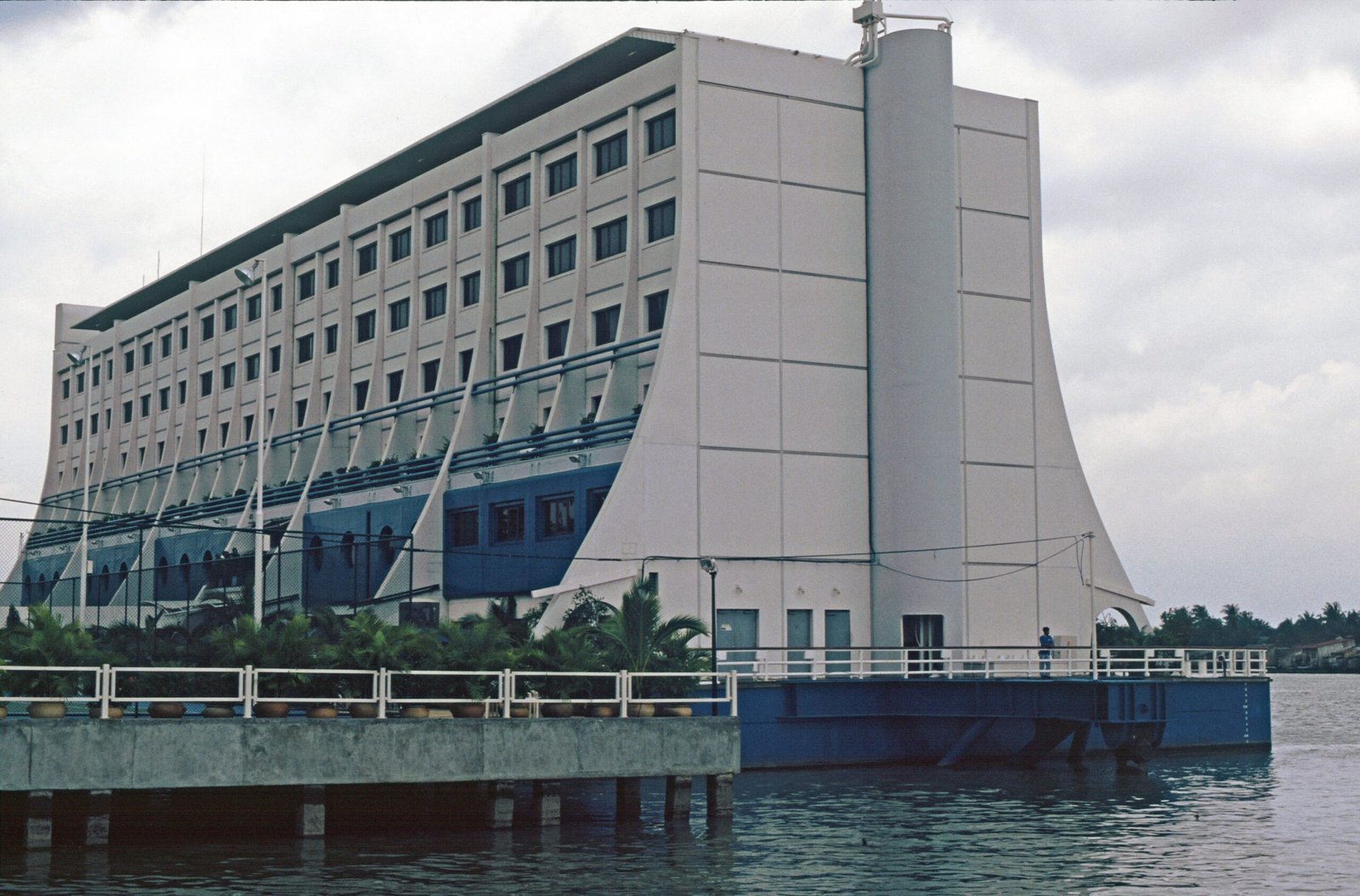Once an exclusive five-star resort hovering above Australia’s Great Barrier Reef, the Hotel Haegumgang now sits in a state of disrepair in a North Korean port, just a 20-minute drive from the Demilitarized Zone separating the two Koreas. This floating hotel, the world’s first of its kind, embarked on a peculiar 10,000-mile journey over 30 years, transitioning from glamorous beginnings to a tragic end.
Conceived by Doug Tarca, an Italian-born professional diver and entrepreneur residing in Townsville, Australia, the floating hotel aimed to offer luxury accommodations for divers exploring the Great Barrier Reef. Tarca, driven by his love for the reef, founded Reef Link in 1983 to transport day-trippers via catamaran from Townsville to a reef formation. The idea of letting people stay overnight on the reef led to the innovative concept of a custom-built floating hotel.
Construction began in 1986 at Singapore’s Bethlehem shipyard, a subsidiary of a now-defunct large US steel company. With an estimated cost of $45 million, equivalent to over $100 million in today’s money, the hotel, officially named Four Seasons Barrier Reef Resort, was transported to the John Brewer Reef within the Great Barrier Reef Marine Park. It featured 176 rooms, accommodating 350 guests, along with amenities such as a nightclub, restaurants, a research lab, a library, and a tennis court.

Despite its grandeur, the hotel faced challenges, including rough weather affecting transportation for guests and a cyclone damaging a freshwater pool one week before its opening. After just one year in operation, the hotel closed due to the escalating operational costs and was eventually sold to a company in Ho Chi Minh City, Vietnam, in 1989.
Renamed Saigon Hotel, it enjoyed success moored in the Saigon River for almost a decade. However, financial troubles led to its closure in 1998. Rather than being dismantled, the floating hotel found an unexpected buyer – North Korea. Acquired to attract tourists to Mount Kumgang, a scenic area near the border with South Korea, the hotel underwent a 2,800-mile journey and opened in October 2000 under the name Hotel Haegumgang.
Managed by Hyundai Asan, a South Korean company, the hotel played a role in inter-Korean exchange and attracted over 2 million tourists to the Mount Kumgang region. However, tragedy struck in 2008 when a North Korean soldier killed a South Korean woman near the tourist area’s boundaries. This incident led to the suspension of tours, and Hotel Haegumgang, along with other facilities, shut down.
Since then, the hotel’s operational status remains unclear, with indications that access may be restricted to North Korea’s political elite. In 2019, North Korean leader Kim Jong-Un criticized the condition of many facilities in the Mount Kumgang area, including Hotel Haegumgang, ordering their demolition to align with North Korean cultural aesthetics. However, the pandemic delayed these plans, leaving the hotel’s future uncertain.
As of now, the floating hotel remains moored at a pier in the Mount Kumgang area, rusting away, awaiting potential demolition. Whether the plan to demolish it will proceed is unknown. The Hotel Haegumgang, with its long and colorful history, serves as a unique testament to the unpredictable journey of a once-luxurious floating resort, now standing as a symbol of both innovation and decay.
Book Paris Trip
Paris sightseeing
Book Paris activities
Louvre museum paris
Paris limousine rental
Rolls Royce Paris
Eiffel Tower Paris
Airport Transfer Paris
Book Paris Taxi
Seine River Cruise
Wine Tasting Paris
Paris luxury hotels
Switzerland luxury hotels
Europe Car rental
Europe coach rental
Paris Limousine
Dior Paris
Beauvais Airport transfer
